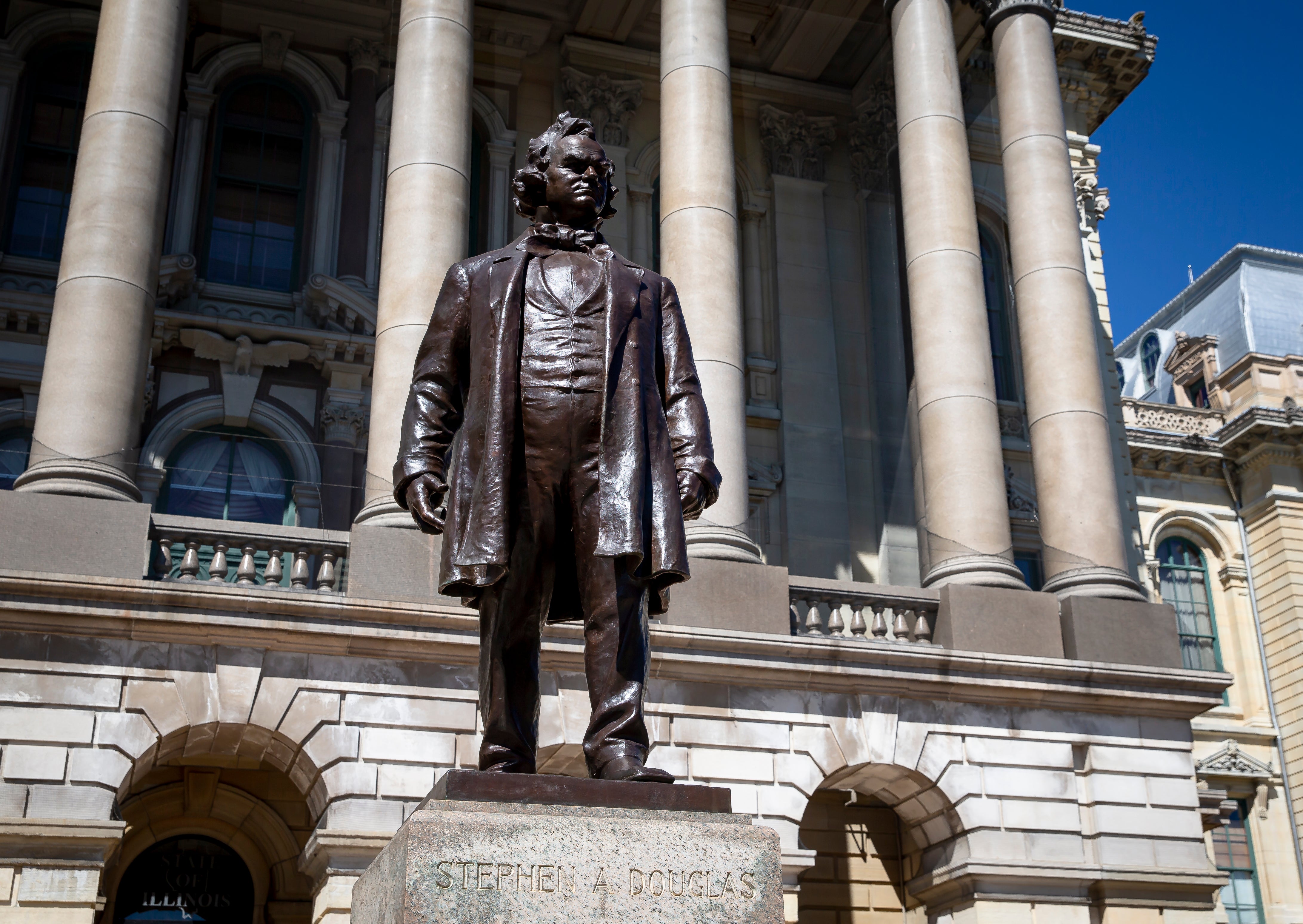Stephen A. Douglas statue removed from Illinois Capitol lawn
A statue of a 19th century senator from Illinois who owned slaves and was a longtime nemesis of Abraham Lincoln has been moved from the Illinois Capitol’s lawn into storage

Your support helps us to tell the story
From reproductive rights to climate change to Big Tech, The Independent is on the ground when the story is developing. Whether it's investigating the financials of Elon Musk's pro-Trump PAC or producing our latest documentary, 'The A Word', which shines a light on the American women fighting for reproductive rights, we know how important it is to parse out the facts from the messaging.
At such a critical moment in US history, we need reporters on the ground. Your donation allows us to keep sending journalists to speak to both sides of the story.
The Independent is trusted by Americans across the entire political spectrum. And unlike many other quality news outlets, we choose not to lock Americans out of our reporting and analysis with paywalls. We believe quality journalism should be available to everyone, paid for by those who can afford it.
Your support makes all the difference.A statue of Stephen A. Douglas, a 19th century senator from Illinois who owned slaves and was a longtime nemesis of Abraham Lincoln, has been moved from the state Capitol's lawn into storage, more than a month after a state board ordered its removal.
Crews on Saturday used equipment to remove the statue of Douglas and a statue of Pierre Menard — an early Illinois settler and politician who was also a slave owner — from the Statehouse lawn in Springfield The State Journal-Register reported.
The board of the Office of the Architect of the Capitol voted unanimously on Aug. 19 to remove both statues after House Speaker Michael Madigan asked the panel in July to consider removing portraits and statuary of Douglas in and around the Capitol.
The Chicago Democrat said he had recently read a book about pre-Civil War history that mentions Douglas profiting from slavery. “I learned of Stephen Douglas’ disturbing past as a Mississippi slave owner and his abhorrent words toward people of color," Madigan said in a July statement.
The Douglas and Menard statues are among the latest monuments, from Confederate generals to Christopher Columbus, to come down during the global reckoning on race sparked by the May 25 death of George Floyd in Minneapolis police custody. Statues of Columbus were removed over the summer in Chicago.
Architect of the Capitol Andrea Aggertt said the Douglas and Menard statues were taken to a secure storage area following their removal on Saturday — a time she said was chosen because there were “less people walking around."
“We had free and clear access of the north drive to maneuver equipment in an out. It went well," she said.
On Monday, workers for a contractor began removing the granite bases that had supported both statues, and which could be reused in the future, Aggertt said. Grass will be seeded in the spots where the statues once stood.
While the outdoor statue of Douglas has been removed, an indoor statue of Douglas on the Capitol’s second floor will remain for now, along with his portrait in the House chamber. The state board took no action this summer on their removal, but voted to take an inventory of all paintings, murals, statues, and other art in the 1876 building.
The board also voted this summer to seek a rule change that would allow Capitol lawn commemorations of people without direct ties to Illinois. Changing that rule will eventually allow for a statue of the Rev. Martin Luther King Jr. to be moved to the grounds from its current location across the street at the Illinois State Library.
The father of Douglas’ first wife bequeathed a Mississippi plantation with slaves to his daughter in 1847. Douglas sidestepped a political conundrum by hiring a plantation manager while he kept 20% of the income.
Menard, who became a successful fur trader in southwestern Illinois nearly 30 years before statehood and was the state’s first lieutenant governor, owned slaves as late as 1830, records show.